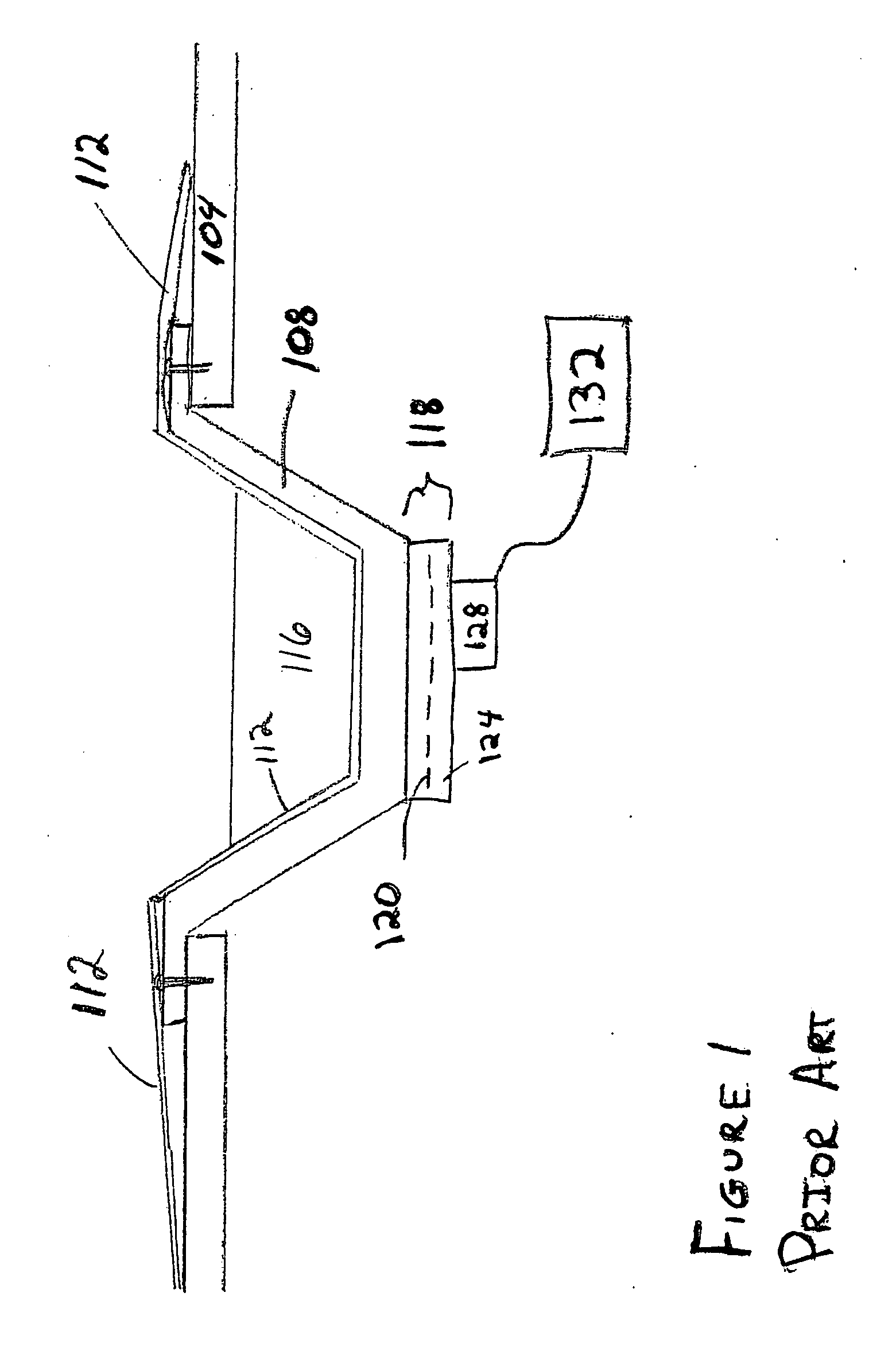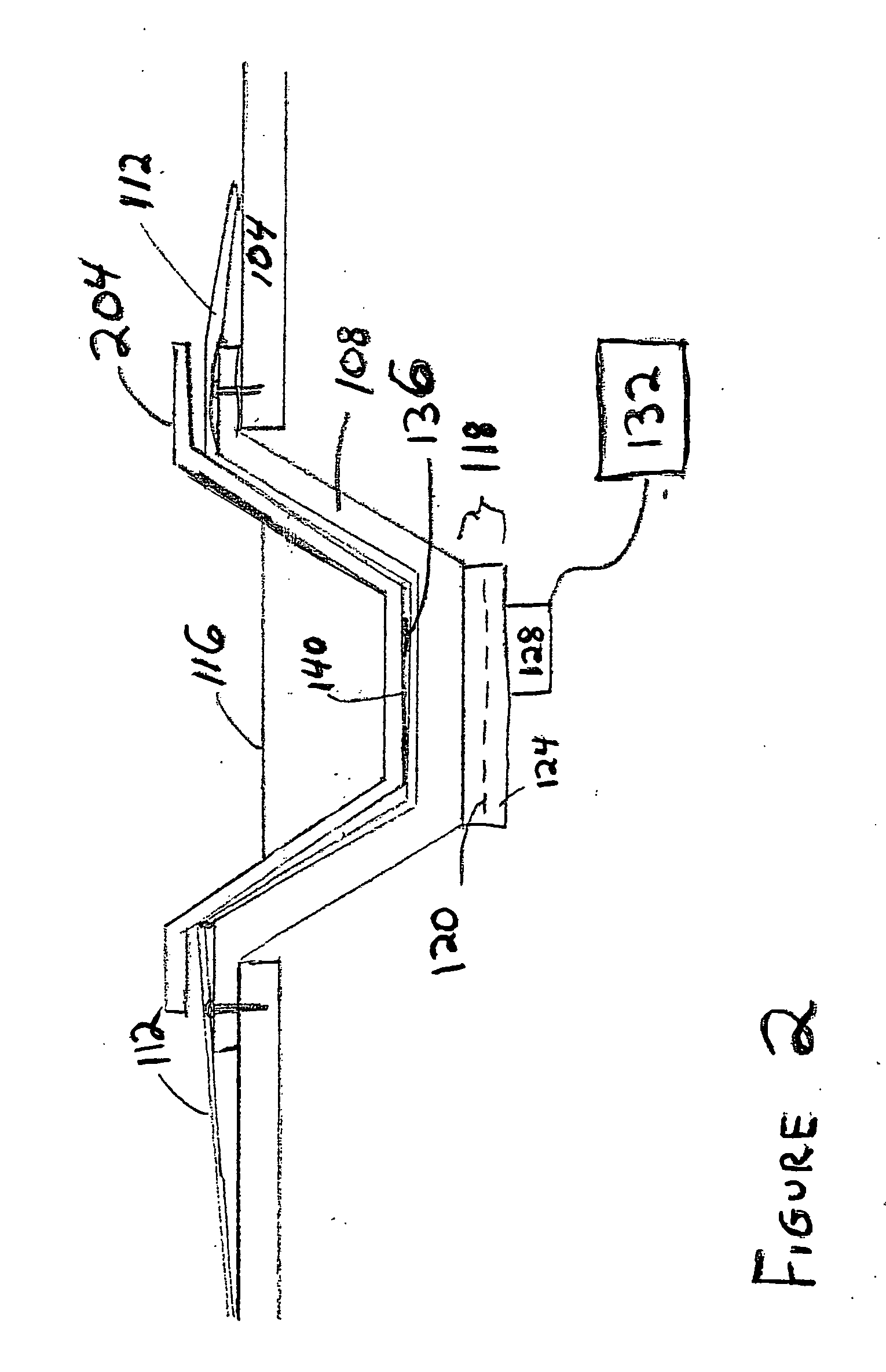Heating element for liquid warming device
a technology of liquid heating device and heating element, which is applied in the field of improved methods and apparatus for heating sterile surgical liquids, can solve the problems of increasing the risk of surgical wound infection, and reducing the ability of the body to remove drugs from its system, so as to achieve the effect of less thermal mass and more responsive to the control system
- Summary
- Abstract
- Description
- Claims
- Application Information
AI Technical Summary
Benefits of technology
Problems solved by technology
Method used
Image
Examples
Embodiment Construction
[0065] As is often the case, a radical change in design provides new features that can be used to make less radical changes to prior art solutions. Thus the warming pad that is well suited for interacting with a removable basin has many desirable features that make it well suited for use with a surgical drape based solution.
[0066] In FIG. 8, sterile fluid 116 rests inside surgical drape 804. Surgical drape 804 lies on warming pad 500. While in the case of a drape, the ability of the warming pad 500 to conform to the shape of the fluid holding drape is not particularly important, other features of the warming pad do make it a better solution.
[0067] First, the placement of the heaters up high in the warming pad cross section to minimize the insulating effect of the pliable warming pad material is helpful. Second the use of the heat distribution layer 416 helps maintain a consistent temperature across the heated area of the drape. Third, the low thermal mass of the heat distribution ...
PUM
 Login to View More
Login to View More Abstract
Description
Claims
Application Information
 Login to View More
Login to View More - R&D
- Intellectual Property
- Life Sciences
- Materials
- Tech Scout
- Unparalleled Data Quality
- Higher Quality Content
- 60% Fewer Hallucinations
Browse by: Latest US Patents, China's latest patents, Technical Efficacy Thesaurus, Application Domain, Technology Topic, Popular Technical Reports.
© 2025 PatSnap. All rights reserved.Legal|Privacy policy|Modern Slavery Act Transparency Statement|Sitemap|About US| Contact US: help@patsnap.com



